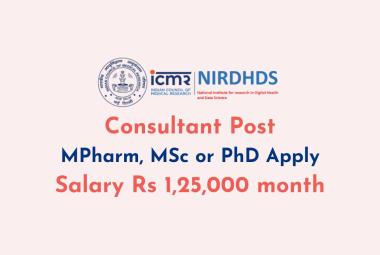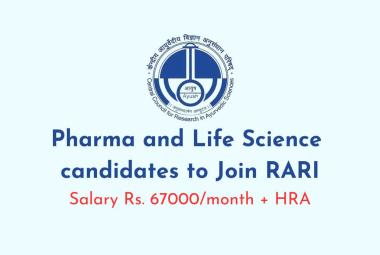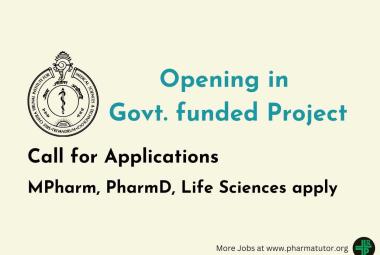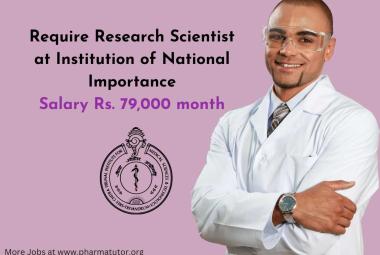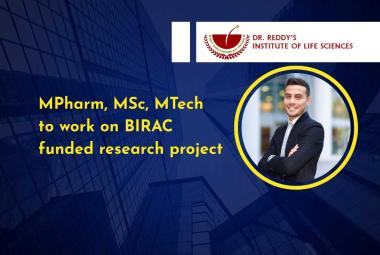{ DOWNLOAD AS PDF }
ABOUT AUTHORS:
Mayure Vijay kumar*1, V. Sravanthi1, Donthineni Kalyan2, Sathyanarayana1, C.P.Meher1
1Department of Pharmaceutical Chemistry, Maheshwara College of Pharmacy,
2Department of Pharmaceutical Analysis, Saraswathi College of Pharmaceutical Sciences.
Isnapur chitkul ‘X’ road, Patancheru, Hyderabad.
*mayurevijaykumar@gmail.com
ABSTRACT:
The heterocyclic compounds are also called as Hetero-cycle, as majority of the chemical compounds are characterized as hetero-compound due to the joining of atoms with the other compounds. The cyclic part (from Greek kyklos, meaning “circle”), while the prefix hetero- (from Greek heteros, meaning “other” or “different”). Although, Quinazolines and Quinoxalines derivatives are known to possess wide range of activities, the major activity of the compound depend on the position of the appropriate hetero-compound, explained to show the pharmacological activities, the theme of these review is to explain the derivatives of the Q&Q compounds with their medications.
INTRODUCTION:
The heterocyclic compound made up of two fused six-membered a simple aromatic rings, a benzene ring and a pyrimidine ring is named as Quinazoline. Derivatives of quinazoline are called Quinazolines. The Quinoxalines are also known as Benzopyrazine. Here in this hetero compound it is a fusion of benzene ring and a Pyrazine ring. As among these heterocyclic complex compounds the priority of both the compounds are useful in the chemistry studies. The following are the chemistry of Quinazolines and Quinoxalines. Although the compounds are in same structures the difference is in the change in the position of the N compound but shows the almost similar pharmacological activities like the followings antitumor, anti mycobacterial and antidepressant1,2 etc….;
PROPERTIES OF Qs & Qs COMPOUNDS:

MEDICATIONS: The following are the Quinazolines derivative drugs and there pharmacology uses.




MEDICATIONS: The following are the few Quinoxalines derivative compounds and their pharmacological uses:

CONCLUSION:
The Heterocyclic compounds are the cyclic compound, as it contains the ring made up of more than one kind of atom. Both the Quinazolines and Quinoxalines compound moieties serves as the nucleus for the synthesis of several biologically actives that are useful for the synthesis of the derivatives in their appropriate compound moiety. This review accomplishes the properties and the derivative compounds that are useful to the different types of the un-controllable diseases and explains the latest pharmacological activities and medications of few Q and Q derivative compounds.
REFERENCES:
1.Armarego, W. L. F. "Quinazolines". Advances in Heterocyclic Chemistry 1963 (1): 253–309.
2.Seitz, L.E.; Suling, W.J.; Reynolds, R.C. Synthesis and Antimycobacterial Activity of Pyrazine and Quinoxaline Derivatives. J. Med. Chem. 2002, 45, 5604–5606.
3.Day, H. E.; Campeau, S.; Watson Jr, S. J.; Akil, H. "Distribution of alpha 1a-, alpha 1b- and alpha 1d-adrenergic receptor mRNA in the rat brain and spinal cord". Journal of chemical neuroanatomy 1997, 13 (2): 115–139.
4.Harrison CN, Campbell PJ, Buck G, et al. "Hydroxyurea compared with anagrelide in high-risk essential thrombocythemia". N. Engl. J. Med. July 2005. 353 (1): 33–45.
5.Raymond E, Faivre S, Armand J. "Epidermal growth factor receptor tyrosine kinase as a target for anticancer therapy". Drugs. 60 Suppl 2000, 1: 15–23; discussion 41–2.
6.Sordella R, Bell DW, Haber DA, Settleman J."Gefitinib-sensitizing EGFR mutations in lung cancer activate anti-apoptotic pathways". Science Aug 2004, 305 (5687): 1163–7.
7.Sattler FR, Allegra CJ, Verdegem TD, et al. "Trimetrexate-leucovorin dosage evaluation study for treatment of Pneumocystis carinii pneumonia". J. Infect. Dis, Jan 1990.161 (1): 91–6.
8."Definition of vandetanib". NCI Drug Dictionary.National Cancer Institute.
9.Hwang DF, Tai KP, Chueh CH, Lin LC, Jeng SS . "Tetrodotoxin and derivatives in several species of the gastropod Naticidae". Toxicon 1991, 29 (8): 1019–24.
10.Medline plus (trusted Health Information for you , a service of the U.S. National Library of Medicine.
11.Cohen, Elliott; Klarberg, Betty; Vaughan, James R. Journal of the American Chemical Society 1960, 82 (11): 2731.
12.Ferreira, H. O. Tratamento da forma indeterminada da doença de Chagas com nifurtimox e benznidazol. Rev. Soc. Bras. Med. Trop.1990, 23:209-211.
13.Kobayashi, Y.; Nakano, Y.; Kizaki, M.; Hoshikuma, K.; Yokoo, Y.; Kamiya, T. "Capsaicin-like anti-obese activities of evodiamine from fruits of Evodia rutaecarpa, a vanilloid receptor agonist". Planta Medica 2001, 67 (7): 628–633.
14. Clissold, S. P.; Beresford, R. "Proquazone. A review of its pharmacodynamic and pharmacokinetic properties, and therapeutic efficacy in rheumatic diseases and pain states". Drugs1987, 33 (5): 478–502.
15.Hughes AN, Rafi I, Griffin MJ, et al. "Phase I studies with the nonclassical antifolate nolatrexed dihydrochloride (AG337, THYMITAQ) administered orally for 5 days". Clin. Cancer Res. Jan 1999. 5 (1): 111–8.
16.McLaughlin, N. P.; Evans, P. "Dihydroxylation of Vinyl Sulfones: Stereoselective Synthesis of (+)- and (−)-Febrifugine and Halofuginone". The Journal of Organic Chemistry 2010. 75 (2): 518–521.
17.Osinski MT, Schrör K "Inhibition of platelet-derived growth factor-induced mitogenesis by phosphodiesterase 3 inhibitors: role of protein kinase A in vascular smooth muscle cell mitogenesis". Biochemical Pharmacology Aug 2000. 60 (3): 381–7.
18.NCBI: pub chem. Compound Summary for: CID 443388.
19.Ochiai T, Ishida R. Pharmacological studies on 6-amino- 2-fluoromethyl- 3-(O-tolyl)- 4(3H)- quinazolinone (afloqualone), a new centrally acting muscle relaxant. (II) Effects on the spinal reflex potential and the rigidity. Japanese Journal of Pharmacology. 1982 Jun; 32(3):427-38.
20.Fenquizone - drug information from MIMS (Thailand).
21.Widemann BC, Balis FM, Godwin KS, McCully C, Adamson PC."The plasma pharmacokinetics and cerebrospinal fluid penetration of the thymidylate synthase inhibitor raltitrexed (Tomudex) in a nonhuman primate model". Cancer Chemother. Pharmacol.1999, 44 (6): 439–43.
22.Hodsman NB, Colvin JR, Kenny GN. "Effect of ketanserin on sodium nitroprusside requirements, arterial pressure control and heart rate following coronary artery bypass surgery". British journal of anaesthesia May 1989. 62 (5): 527–31.
23.H. Spreitzer "Neue Wirkstoffe - BI-1356". Osterreichische Apothekerzeitung (in German) Sep1 2008 (18/2008): 918.
24.Chen K, Wang K, Kirichian AM, et al. "In silico design, synthesis, and biological evaluation of radio iodinated quinazolinone derivatives for alkaline phosphatase-mediated cancer diagnosis and therapy". Mol. Cancer Ther. Dec 2006. 5 (12): 3001–13.
25.Thompson EM, Nagata S, Tsuji FI. "Cloning and expression of cDNA for the luciferase from the marine ostracod Vargula hilgendorfii". Proceedings of the National Academy of Sciences 1989, 86 (17): 6567–71.
26."Aspergillic Acid". Drugfuture.com. Retrieved 2012-11-26.
27.Marais, J., Hunter, J.J., & Haasbroek, P.D. Effect of microclimate, season and region on Sauvignon blanc grape composition and wine quality. South African Journal of Enology and Viticulture 1999, 20, 19-30.
28.Watanabe, K; Oguri, H; Oikawa, H. "Diversification of echinomycin molecular structure by way of chemo enzymatic synthesis and heterologous expression of the engineered echinomycin biosynthetic pathway." Current Opinion in Chemical Biology Apr 2009, 13 (2): 189–96.
29.Hori K, Charbonneau H, Hart RC, and Cormier MJ."Structure of native Renilla reinformis luciferin". Proceedings of the National Academy of Sciences 1977, 74 (10): 4285–4287.
REFERENCE ID: PHARMATUTOR-ART-2228
|
PharmaTutor (ISSN: 2347 - 7881) Volume 2, Issue 8 Received On: 15/06/2014; Accepted On: 18/06/2014; Published On: 01/08/2014How to cite this article: VK Mayure, V Sravanthi, D Kalyan, Sathyanarayana, CP Meher; Medications of Quinazolines and Quinoxalines (Qs & Qs): An Overview; PharmaTutor; 2014; 2(8); 179-187 |
NOW YOU CAN ALSO PUBLISH YOUR ARTICLE ONLINE.
SUBMIT YOUR ARTICLE/PROJECT AT articles@pharmatutor.org
Subscribe to Pharmatutor Alerts by Email
FIND OUT MORE ARTICLES AT OUR DATABASE



